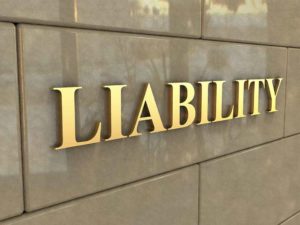How do you understand liability in a slip and fall case?
Identifying the at-fault party in a slip and fall case can be tricky. They key is proving liability, and that is a 4-step process. First we must prove the defendant is the owner of the property. Next, it must be shown that the defendant was negligent in the use or maintenance of their property. Third, the plaintiff must be injured. Finally, the property owner’s negligence must be a substantial factor in the harm caused to the plaintiff. Let’s take a closer look at each step:
Step 1
If there is no incident report that lists the owner of the property or the property management company, then you need to find a way to determine ownership. A letter may be sent to the address of the incident asking for the name and insurance information of the ownership party.
Another way to identify the owner of a piece of property is to contact the county assessor. For example, if you are injured in Long Beach, you would visit the Los Angeles County Office of the Assessor website. You could fill out a public inquiry request there, or visit the office in person to get the information you need. Some counties even offer the information online. You might also be able to use other services found on Google, but you’ll want to double-check their accuracy.
Step 2

“A person who owns property is negligent if he fails to use reasonable care to keep the property in a reasonably safe condition. A person who owns property must use reasonable care to discover any unsafe conditions and to repair, replace, or give adequate warning of anything that could be reasonably expected to harm others.”
Therefore in deciding whether the landowner used reasonable care, a jury may consider, among other factors, the following:
- Location of the property and the foreseeability that people will be present on the property;
- Likelihood that someone would come onto the property in the same manner as the injured party both by custom and use of the property;
- Likelihood of harm;
- The probable seriousness of such harm;
- Whether the owner knew or should have known of the condition that created the risk of harm;
- Difficulty of protecting against the risk of such harm, which looks at the ease and cost of preventive measures like repairing, fixing or notifying the public about the defect;
- The extent of the owner’s control over the condition that created the risk of harm, which is the exclusiveness control of the property by the owner.
Basically, a landowner owes a duty to those who use his or her property to discover unsafe conditions and repair, replace, or give adequate warning of issues that could reasonably harm others.
Step 3
Remember, damages are an essential element to a slip and fall claim. Falls may cause seriously injuries to your head, arms and legs. A fracture or a torn ligament where surgery is needed fulfills this element. Please note, a medical professional must determine that the injuries are related to the fall.
Personal injury cases are recourse for people who are seriously injured and deserve compensation to cover medical bills, related expenses, and pain and suffering.
Step 4
Finally, the negligence of the property owner needs to be a substantial factor in the injury. A substantial factor is a factor that a reasonable person would consider to have contributed to the harm to the plaintiff. For example, if a 3-inch bolt sticking out of the ground in a parking lot was never removed, it is a substantial factor for someone tripping over it.
Proving liability in a slip, trip or fall case is extremely important and difficult. You need to contact an experienced attorney as soon as possible after such an incident so that evidence of the defect may be obtained.
Exception
When there is a defect on the premises that is so obvious that any person could reasonably be expected to see the unsafe condition, then the landowner does not have a duty to warn. This means the unsafe condition is big and obvious to the naked eye. When the defect stands out, the owner does not have to warn people about the dangerous condition. However, there is no definition on what is consider obvious, it is up to the trier of fact.